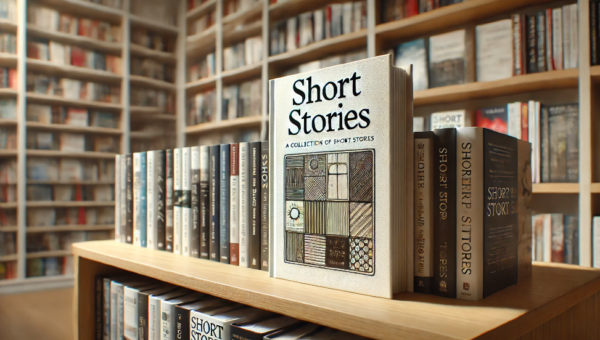Ever read a sentence so confusing it felt like a word salad with extra croutons—crunchy, chaotic, and completely indigestible? You’re not alone. Great writing isn’t just about dazzling vocabulary or poetic flair—it’s about structure. Underneath every gripping novel, persuasive blog post, or even that one email you actually enjoyed reading, there’s a hidden framework doing the heavy lifting.
So, what is text structure—and why does sentence structure play such a big role in it? Think of sentence structure as the bones of your writing: it holds everything upright, determines the shape, and makes sure your message walks instead of limps.
In this article, we’ll crack the code behind great sentences—without boring you to tears. We’ll decode the difference between text structure and sentence structure (yes, they’re related but not twins), break down sentence types, and show you how the pros do it. Expect clarity. Expect examples. Maybe even a laugh or two. By the end, you’ll write with more control, creativity, and confidence—no grammar degree required.
What Is Sentence Structure, Really? (Not Just Grammar’s Boring Cousin)
Let’s get one thing straight: sentence structure isn’t here to bore you—it’s here to make your writing sing. So, what is sentence structure exactly?
In plain English, sentence structure refers to how a sentence is built—the order of words, the clauses used, and the relationships between them. It’s the difference between “The cat chased the mouse” (straightforward) and “The mouse, terrified and tiny, darted beneath the sofa as the cat pounced” (dramatic and detailed).
Here’s how it changes things:
- Simple: I ran.
- Compound: I ran, and I jumped.
- Complex: I ran because I was late.
Compound-complex: I ran because I was late, and I spilled my coffee doing it.
Each version tells the same core story, but the how of it—aka the structure—shifts tone, rhythm, and clarity. That’s the magic.
Now, zoom out a little. Just like bricks make a building, sentences make up paragraphs, and paragraphs build the larger architecture of your writing. That’s what text structure is: the overarching framework of how ideas are organized in a piece. In other words, sentence structure is a subset of text structure—the foundational units that shape the bigger picture.
Think of it like jazz: sentence structure has rules, but it grooves when you know how to play with it. Mastering it doesn’t just improve grammar—it transforms the flow, punch, and power of your writing.
Your Publishing Journey Awaits – Start NowWhat Is Text Structure? The Blueprint Behind Sentences That Work
If sentence structure is the brick, text structure is the blueprint. So let’s answer the big question: what is text structure?
Text structure refers to how information is organized and presented in a piece of writing. It’s the arrangement of ideas—how they flow, build, and connect from one sentence to the next. In other words: It’s the master plan that holds your message together, whether you’re writing a novel, an essay, or a blog post.
Here’s a quick contrast:
Poorly structured paragraph:
I love coffee. It rained today. My cat’s name is Pickles. Deadlines are stressful.
Well-structured paragraph:
Deadlines are stressful, especially when paired with dreary weather. Luckily, my morning coffee ritual—and Pickles, my overly affectionate cat—keep me sane.
Same ideas. One is a chaotic grocery list of thoughts. The other is a coherent little story. That’s what the text structure does: it transforms disconnected sentences into meaningful flow.
And here’s the kicker: sentence structure lives inside text structure. Your beautifully crafted sentences are only as strong as the paragraph or section they support. Like puzzle pieces, they need to fit together in a purposeful way—chronological, cause and effect, compare and contrast, or whatever structure suits your message best.
When you master structure—from sentence to full text—you unlock writing that’s not only clear but creative, compelling, and irresistibly readable. Structure isn’t just for clarity; it’s fuel for expression.
Sentence Structure Types: The LEGO Blocks of Language
Think of sentence structure like building with LEGOs. You can stack a single block, snap two together, or build an entire Millennium Falcon—depending on your style and storyline. The four main sentence structure types are your basic building blocks, and once you get to know them, writing becomes way more fun (and way less chaotic).
Here’s your cast of characters:
🟩 1. Simple Sentence – The Reliable Sidekick
One independent clause. That’s it.
Example: Pickles pounced.
It’s short, clear, and gets the job done—like the dependable best friend in every sitcom.
🟨 2. Compound Sentence – The Dynamic Duo
Two independent clauses joined by a coordinating conjunction (like and, but, so).
Example: Pickles pounced, and the coffee spilled.
This sentence adds a beat and builds rhythm—great for cause-and-effect, action, or contrast.
🟥 3. Complex Sentence – The Deep Thinker
One independent clause + one or more dependent clauses.
Example: While I reached for my mug, Pickles pounced.
This one adds nuance. Great for showing relationships and layering meaning.
🟦 4. Compound-Complex Sentence – The Overachiever
Two independent clauses + at least one dependent clause.
Example: While I reached for my mug, Pickles pounced, and the coffee spilled everywhere.
It’s a bit of a mouthful, but perfect when you want depth and movement.
Each of these sentence types serves a purpose—and knowing how to use them helps you build stronger paragraphs and more coherent arguments. Knowing what a text structure is helps you build with the right blocks, whether you’re writing a how-to guide, a short story, or a witty newsletter.
Pro tip: Variety is key. Just like a toolbox needs more than just a hammer, your writing needs more than just simple sentences. Mix it up, and let your structure support your style.
Why Structure Matters: From Rambling Mess to Riveting Prose
Structure isn’t just for English teachers and architecture majors—it’s what keeps your writing from sounding like a chaotic inner monologue at 3 a.m. Strong sentence and text structure are your best friends when it comes to readability, clarity, tone control, and pacing. Without them, your words wander. With them, your message lands.
Let’s compare:
Broken structure: The dog barked loudly she was angry I spilled coffee because Monday.
Polished version: The dog barked loudly. She was angry—probably because I spilled coffee. It was Monday, after all.
See? Cleaner. Smoother. Actually makes sense.
Structure helps your readers breathe with short sentences and settle in with longer ones. It sets the tone—snappy and funny, slow and dramatic, or lyrical and poetic. It guides the reader, saying, “Hey, this part’s important,” or “Let’s move things along.”
And yes—if you’re going for ancient space-sage vibes, twist your sentences you may. But for the rest of us? Unless you’re trying to write like Yoda, don’t twist your sentences into knots.
Structure doesn’t restrict creativity—it unlocks it. When your words are well-built, your ideas can finally shine through the clutter.
Creative Uses of Sentence Structure: Breaking the Rules (On Purpose)
Once you know the rules, you get to break them—and that’s where things get interesting. Authors and poets have been bending sentence structure for centuries to craft unique voices, stir emotion, and create unforgettable rhythms.
Take Ernest Hemingway, the king of minimalism:
“He was an old man who fished alone in a skiff in the Gulf Stream…”
Short. Stark. Stripped down to the essentials—perfect for his tough, restrained characters.
Now contrast that with William Faulkner, who wrote like his thoughts were running a marathon:
“A man is the sum of his misfortunes…”
His sentences stretch, spiral, and swell with emotion—suiting the complexity of his stories.
And poets? They toss the structure in the air and let it land like confetti.
This isn’t sloppiness. It’s intentional. It’s art. Sentence structure isn’t a cage—it’s a launchpad. You get to play with fragments, repetition, pauses, and pace to match your message and mood.
So, if you’re wondering what is the definition of text structure, it’s not just about rules. It’s about strategy. It’s the conscious choices you make to guide the reader’s experience. Learn the building blocks, then build whatever weird, wonderful palace you want.
Text Structure in Action: A Mini Makeover
Let’s roll up our sleeves and give a sad little paragraph a glow-up. Because nothing says “I understand sentence structure” like a real-life transformation.
Before (a structural mess):
I went to the store. It was raining. I forgot my umbrella. The dog was barking when I got home. I was tired.
- Ugh. It reads like a robot’s grocery list. No flow, no rhythm, no connection between ideas. Let’s fix that.
After (structured and snappy):
It was pouring when I dashed to the store—without my umbrella, of course. By the time I got home, soaked and shivering, the dog was howling like he’d been abandoned for days. I was tired, wet, and one cup of coffee away from a breakdown.
- Boom. Same info, wildly different vibe. The revised version uses a mix of sentence structures (simple, complex, and compound) and adds transitions to create rhythm and flow. Even the dog sounds more dramatic.
This is what happens when you understand what text structure is—you take bland, blocky writing and turn it into something smooth, expressive, and readable.
Recap: So… What Is Text Structure, Again?
Let’s bring it home. So, what is text structure, really?
It’s the framework that holds your writing together—the way sentences, paragraphs, and ideas are organized so they make sense (and make readers care). And sentence structure? That’s the fine-tuned engine inside each line, deciding whether your writing races, strolls, or stumbles.
When you ask yourself about text structure, now you know: it’s less about grammar drills and more about shaping ideas that stick.
Great writing isn’t built on rules. It’s built on rhythm, clarity, and flow.Mastering sentence and text structure isn’t about following rules. It’s about telling your story so people actually want to keep reading. Now go break the rules—with purpose.
FAQ: What is Text Structure?
Q: How do you structure a text?
To structure a text effectively, start with a clear introduction that sets up the main idea or argument. Follow with body paragraphs that support your main point, each focusing on one key idea. Use appropriate transitions to guide the reader through your ideas smoothly. End with a conclusion that ties everything together and reinforces your main argument. The structure should follow a logical flow, with each part contributing to the overall message.
Q: How do you identify text structure?
To identify text structure, pay attention to how the author organizes their ideas. Look for common patterns like chronological order (events in time), cause and effect (one event causes another), compare and contrast (similarities and differences), or problem and solution (issues and how they’re addressed). Recognizing the structure helps you understand how information is organized and why it’s presented that way.
Q: What are the types of structures in writing?
There are several types of structures in writing, including:
Chronological structure: Events presented in the order they happened.
Cause and effect: Showing how one event leads to another.
Compare and contrast: Discussing similarities and differences between two or more ideas.
Problem and solution: Describing a problem and offering solutions.
Descriptive structure: Focused on detailing characteristics of a subject.
Q: How do I improve my sentence structure?
Improving sentence structure starts with varying your sentences—use a mix of short, impactful statements and longer, more complex ones to create rhythm. Avoid run-on sentences and overly complicated structures. Focus on clarity and simplicity without sacrificing creativity. Also, use transition words to connect ideas smoothly and maintain flow. Reading your writing aloud can help identify awkward phrasing or jarring sentence breaks, giving you a better sense of what needs tweaking.
Q: How many main text types are there?
There are five main types of text:
Narrative (telling a story)
Expository (informing or explaining)
Descriptive (painting a vivid picture)
Argumentative (making a case for something)
Persuasive (convincing the reader to adopt a point of view or take action)
Q: How does sentence structure affect writing?
Sentence structure plays a huge role in how your writing is perceived. Well-structured sentences enhance readability, making your message clear and engaging. Short sentences create impact and urgency, while longer, more complex sentences can add depth and detail. By varying your sentence structure, you can control the rhythm, pace, and tone of your writing, ensuring it resonates with your audience. Mastering sentence structure means making every word count, guiding readers effortlessly through your ideas.








